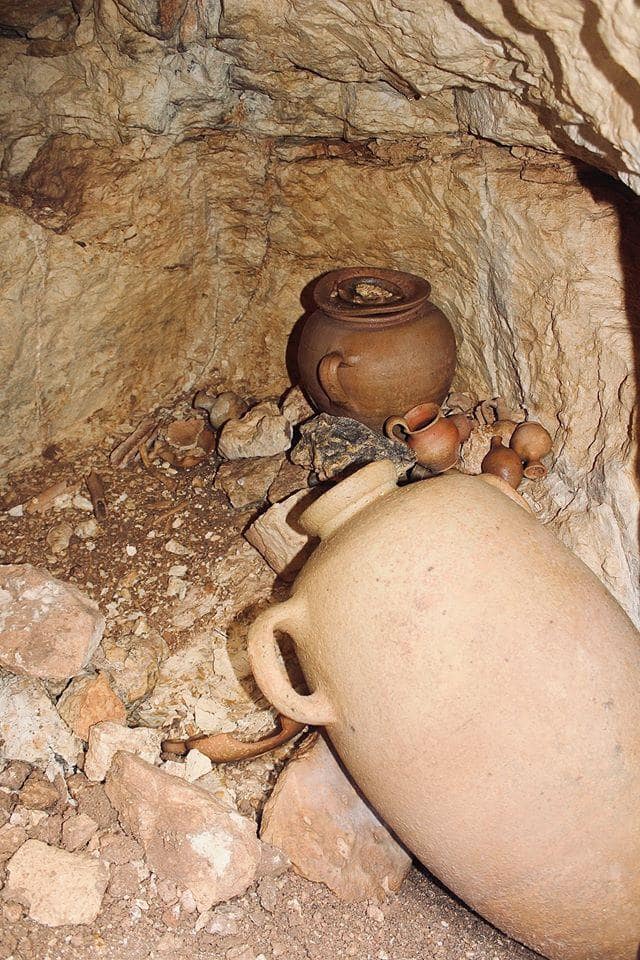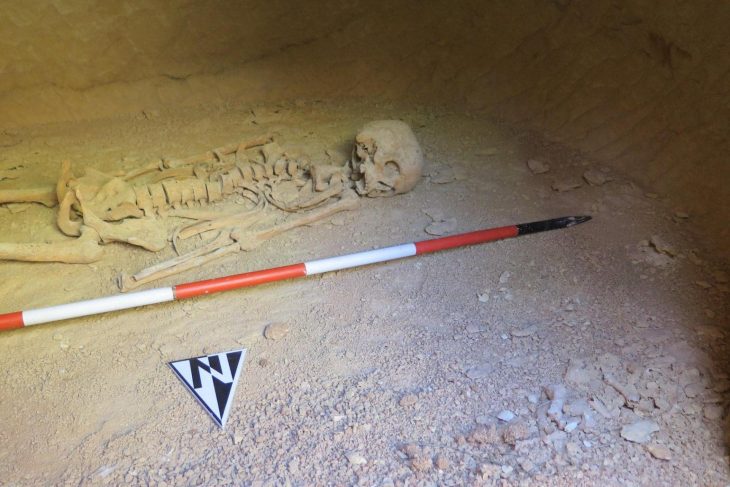The recent discovery of an intact tomb dating back to the Punic period in Tarxien has unveiled a treasure trove of archaeological wonders, shedding new light on Malta’s ancient heritage. The Superintendence of Cultural Heritage (SCH) has revealed details of this remarkable find, including a complete skeleton and pottery remnants, discovered during excavation works in Gaxaq.
The tomb, a rock-cut structure, was uncovered during routine archaeological monitoring on a site earmarked for construction. Situated near other tombs previously unearthed in the 1990s along Tal-Barrani Road, close to the Għaxaq and Żejtun boundaries, this newly discovered tomb stands out for its pristine condition and undisturbed contents. Sealed with a sealing slab, the tomb’s intact nature offers a rare glimpse into ancient burial practices and customs.
Inside the chamber, archaeologists found a full set of burial accouterments, including numerous well-preserved urns. These urns, still containing cremated ashes, were accompanied by an amphora and several small jars believed to have held burial offerings. The meticulous preservation of these artifacts provides valuable insights into funerary rituals and material culture from the Punic period, approximately 2,000 years ago.

The SCH’s Heritage Data Management and Research Unit made additional discoveries within the tomb, including a complete skeleton and ceramic containers. Osteologists will analyze the skeleton to glean information about the individual’s age, sex, and potential health conditions, offering a glimpse into the life and death of the tomb’s occupant. Meanwhile, archaeologists will study the ceramics to pinpoint the burial’s precise timeframe and cultural context.
In accordance with the 2019 Cultural Heritage Act, the tomb has been documented and will receive protection, ensuring its preservation for future generations. It will also be cataloged in the national inventory, contributing to a deeper understanding of the region’s rich archaeological landscape.
The SCH emphasized its commitment to safeguarding Malta’s heritage, noting ongoing vigilance in monitoring development activities in the area. Previous discoveries, such as the Punic rock-cut tombs in Tal-Ħotba in 1965 and the late Roman burial site along Tal-Barrani in Żejtun in 1993, highlight the area’s historical significance and continuous archaeological exploration.
As scholars delve further into the secrets of this newly discovered tomb and its contents, the story of ancient Malta continues to unfold, weaving together threads of history, culture, and human experience. Each discovery brings us closer to unraveling the mysteries of the past and preserving our shared heritage for generations to come.
